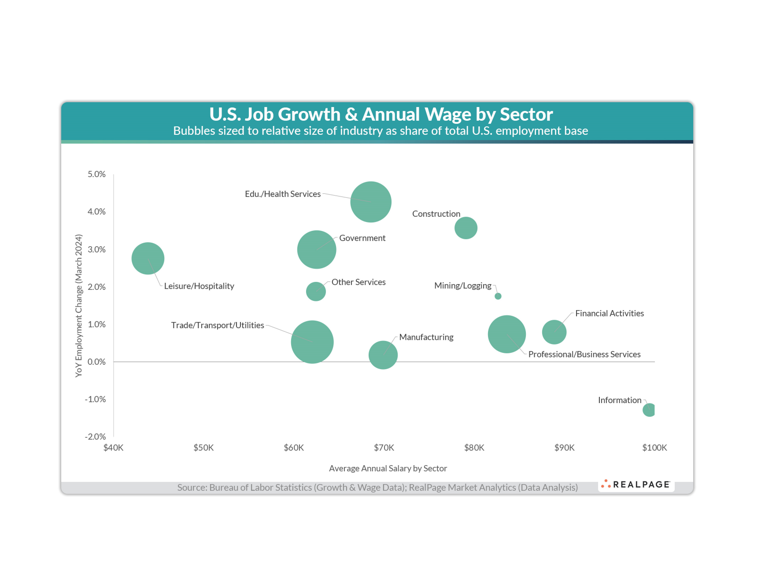By Roland Murphy for AZBEX
A new report from RealPage by Carl Whitaker indicates the Construction sector might be one of the next segments of the labor force to see a slowdown in employment.
RealPage claims employment growth in sections of the economy more sensitive to interest rates are already seeing slowing or erosions in job numbers, which the author claims indicates a “rolling recession.” A rolling recession occurs when portions of the economy experience a recession, while the overall economy does not.
Writing on the topic for GlobeSt, Erik Sherman cited a Cushman & Wakefield report that also referred to the U.S. as being in a state of recession.
The RealPage data shows interest rate pressures have eroded job growth in the employment sectors with the highest wages, including Professional and Business Services and Financial Activities. Sectors that are more impervious to interest rate fluctuations, like Government and Education, are still showing solid growth, according to data from the Bureau of Labor Statistics.
Construction appears to be one of the sectors potentially on the bubble. Interest rates impact Construction on multiple fronts, including commercial real estate transaction levels, development financing, and materials and equipment purchases, among others.
Despite those pressures, construction employment is generally doing well at the moment. Associated Builders and Contractors’ April report on nonresidential construction employment showed an increase of 7,800 jobs nationwide for the month, with an industry-wide gain of 9,000 on net.
As has been the case in many aspects of the construction industry, expected declines in demand and activity have generally failed to materialize. However, given declines in construction starts in Residential and Industrial in several markets, the ripple is likely to reverberate outward to employment at some point, once backlogs begin to absorb at higher rates.
Whitaker put it directly, saying, “Construction seems like it’s bound to ease.”
Still, the stubbornly high rates of inflation and the interest increases to address it have not yet throttled back demand in the housing market, which is continuing to fuel construction job growth. Class A housing saw record numbers for unit absorption in Q1.
While slowdowns in both Construction employment and housing demand have been forecast repeatedly over the last three years, there are no immediate indicators that either are imminent. Both, however, bear watching.

